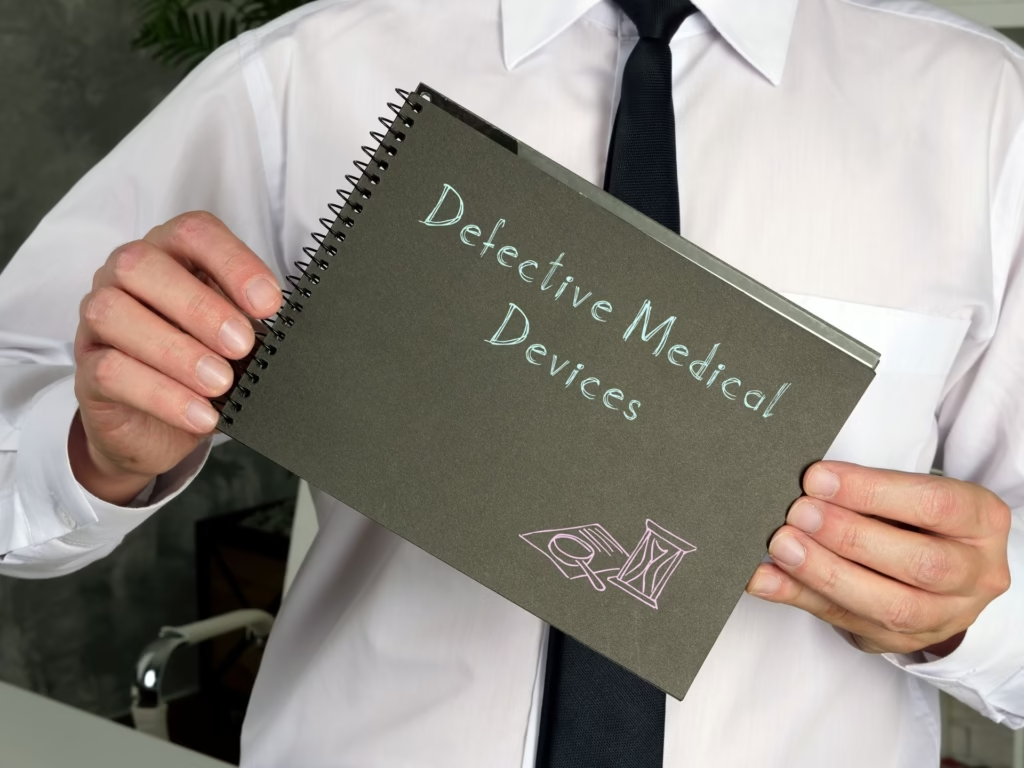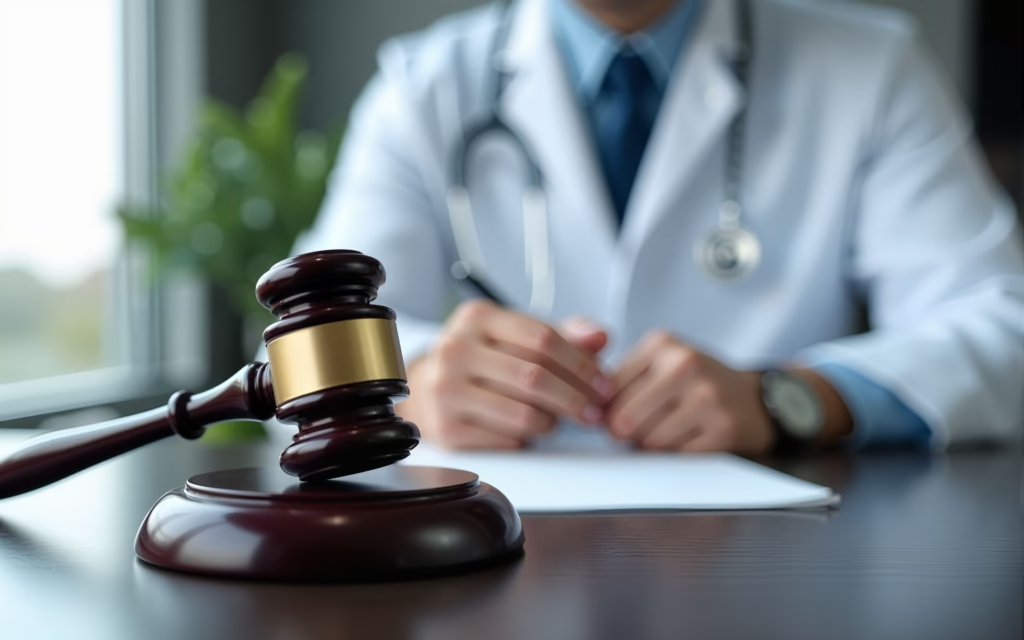 Medical devices play a crucial role in diagnosing, treating, and managing health conditions. However, when these devices malfunction or cause harm due to defects, patients may suffer severe injuries, chronic pain, or even life-threatening complications. Pursuing a defective medical device claim can be complex, requiring a thorough understanding of legal procedures, medical evidence, and product liability laws.
Medical devices play a crucial role in diagnosing, treating, and managing health conditions. However, when these devices malfunction or cause harm due to defects, patients may suffer severe injuries, chronic pain, or even life-threatening complications. Pursuing a defective medical device claim can be complex, requiring a thorough understanding of legal procedures, medical evidence, and product liability laws.
This guide outlines the essential steps involved in such claims, helping injured individuals navigate the legal process effectively.
Understanding Defective Medical Devices
A defective medical device is any product that fails to perform as intended, leading to patient harm. These defects can arise from design flaws, manufacturing errors, or inadequate warnings about potential risks. Some common examples include faulty hip implants, defective pacemakers, or malfunctioning surgical mesh. When injuries occur, victims may have grounds for a legal claim against manufacturers, distributors, or healthcare providers.
As such, consulting a personal injury lawyer early in the process can help determine the validity of a claim and identify liable parties. Legal professionals specializing in defective medical device cases can also assess medical records, product recalls, and expert testimonies to build a strong case.
Steps for Filing Defective Medical Device Claims
Defective medical devices can cause severe injuries, leaving patients with mounting medical bills and long-term health complications. Understanding the legal steps is crucial for securing compensation.
Below are the key stages in pursuing a claim, helping injured individuals navigate the complex legal process effectively.
Step 1: Recognizing the Signs of a Defective Device
While complications can occur after any medical procedure, certain warning signs may point to a defective medical device rather than typical post-surgical recovery. Persistent or worsening symptoms like unexplained pain at the implant site, recurring infections with no apparent cause, or sudden device malfunctions should raise concerns.
Additionally, if pre-existing health issues resurface or new problems develop shortly after implantation, the device itself may be faulty. Patients noticing these red flags should promptly consult their healthcare provider for evaluation while meticulously documenting their symptoms, treatments, and medical visits. These records become vital evidence when pursuing a legal claim, as they establish a clear connection between the device and resulting harm.
Early medical intervention can also help protect health and strengthen potential legal action by creating a verifiable timeline of injuries linked to the defective product.
Step 2: Gathering Evidence to Support the Claim
Building a strong defective medical device case requires substantial evidence, including:
- Medical records detailing injuries and treatments
- Device identification (model number, serial number, manufacturer details)
- FDA recalls or warnings related to the product
- Expert testimony from medical professionals confirming defects
- Photographs or videos of injuries or device malfunctions
Preserving the defective device, if possible, can also strengthen the case and ensure a more favorable outcome for the victims.
Step 3: Determining Liability in Defective Medical Device Cases
Multiple parties may be held accountable for injuries caused by a defective medical device. These parties include:
- Manufacturers: They’re responsible for design, production, and safety testing.
- Distributors or Suppliers: They’re liable if they sold a faulty product knowingly.
- Healthcare Providers: They may be at fault if they improperly implanted or misused the device.
On the other hand, product liability laws vary by state, but most cases fall under three legal theories:
- Design Defects: This means the device’s inherent design is unsafe.
- Manufacturing Defects: These refer to errors occurred during production.
- Failure to Warn: These involve inadequate instructions or warnings about risks.
Seeking legal help can be essential in identifying the appropriate legal strategy based on the circumstances.
Step 4: Filing a Defective Medical Device Lawsuit
 Once liability has been established, the legal process formally begins with filing a lawsuit. The first step involves drafting and submitting a legal complaint to the appropriate court, detailing the injuries sustained, the defective nature of the medical device, and the legal grounds for holding the manufacturer or other parties responsible. This document initiates the case and notifies the defendants of the claims against them.
Once liability has been established, the legal process formally begins with filing a lawsuit. The first step involves drafting and submitting a legal complaint to the appropriate court, detailing the injuries sustained, the defective nature of the medical device, and the legal grounds for holding the manufacturer or other parties responsible. This document initiates the case and notifies the defendants of the claims against them.
Following the complaint, the discovery phase begins, during which both sides exchange evidence. This may include medical records, expert testimonies, internal company documents, and depositions from involved parties. Discovery can help uncover critical facts about the device’s defects and the extent of the plaintiff’s injuries.
Furthermore, many defective medical device cases are resolved during settlement negotiations before reaching trial. Manufacturers typically prefer to settle to avoid negative publicity and lengthy court battles. However, if a fair agreement can’t be reached, the case proceeds to trial, where a judge or jury evaluates the evidence and determines liability and compensation.
Lastly, it’s crucial to act promptly, as statutes of limitations can impose strict deadlines for filing claims, typically ranging from one to several years from the date of injury or discovery of harm. Missing this window can permanently bar a victim from seeking justice.
Step 5: Compensation in Defective Medical Device Claims
Victims of defective medical devices may be entitled to various forms of financial compensation, depending on the severity of their injuries and the circumstances of the case. The primary categories of recoverable damages include:
- Medical expenses: This covers past and future costs related to surgeries, hospital stays, prescription medications, physical therapy, and any necessary corrective procedures due to the defective device.
- Lost wages and reduced earning capacity: If the injury forced the victim to miss work or rendered them unable to return to their previous job, they may recover lost income and compensation for diminished future earnings.
- Pain and suffering: Non-economic damages involve physical pain, emotional distress, and reduced quality of life due to a defective device.
- Punitive damages: In cases involving gross negligence or intentional misconduct by the manufacturer, courts may award punitive damages to punish the defendant and deter similar behavior in the future.
The total compensation varies based on factors such as injury severity, long-term impact, and the strength of the evidence. An experienced attorney can help victims pursue the maximum possible recovery through negotiation or litigation.
Key Takeaways
Defective medical device claims require meticulous preparation, expert testimony, and legal expertise. Victims should act promptly, gather evidence, and seek professional legal guidance to maximize their chances of compensation. By understanding each step of the process, injured individuals can pursue justice and hold negligent parties accountable.








